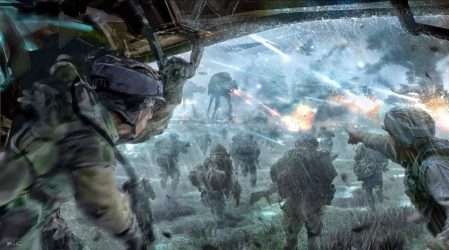Look. We’re all going to see this film, barring the Mountain Hermits. Is there a point to reviewing something we’re all going to see?
Yes, because it’s an excellent demonstration of how a film maker should do a spinoff from a franchise.
So how does this film rank in the Star Wars canon? Third best, after the masterful 1977 Star Wars Christmas Special and Ewoks: The Battle for Endor.
Sarcasm does not become you. Ok, Rogue One is the third best of the existing 2016 body of Star Wars films, after Empire Strikes Back and A New Hope.
Better than Return? I didn’t see the main hero team getting jumped by midget teddy bears, so yes.

Gareth Edward’s Rogue One is the tightest, leanest film yet made in the sprawling Star Wars space opera. The film has the barest minimum of slack and exposition needed to propel the characters into the next scene.
So, What is a Rogue One? It’s about everything it took to get that floppy disk to Princess Leia during Episode One. Specifically, Jyn Erso (Felicity Jones), daughter of an imperial weapons scientist (Mads Mikkelson), who is busted out of prison by the nascent Rebel Alliance in the hopes of leading rebel spy Cassian Andor (Diego Luna). The potential for treachery lays on all sides; the Rebel Alliance is not exactly a coherent group, and every character introduced has some variety of shady side.
Rogue One succeeds as a prequel by rebooting the original hard luck dynamic of the first trilogy. A major problem of Episodes I-III, and also The Force Awakens, is that the power dynamic is more balanced. The heroes are not quite on the edge of total annihilation. In Rogue One, we see the Galactic Empire at the very height of its power.

Edwards also amplifies the tension by introducing a high degree of moral ambiguity. Like actual civil wars in Syria and Iraq, the splintered groups of the rebellion engage in a spectrum of terrorism, and are at each other’s throats as often as they are at the enemy.
It rounds out the hero team with some well introduced side characters, like K-2SO (Allan Tudyk), the snide and cynical droid companion of Cassian. If the film has a weakness, it’s that the main villain (Ben Mendelsohn) is a generic English ham; however, the supporting villains of Darth Vader, and a fantastically re-created digital eidolon of Peter Cushing, bring a good deal of malice to the Imperial forces.

Visually, Gareth Edwards ably conveys the immensity and grandeur of the space opera. J.J. Abrams and his films make paintings, bright and flat; Edwards, in all of his films, has demonstrated an understanding of how to add a layer of tangibility and physical existence to his graphic illusions, whether it is a rampaging monster or the Death Star annihilating a city.
Lastly, Rogue One works as one of the most exciting films because it reintroduces stakes and risks, and a very plausible sense that any character could die at any minute. To compare and contrast it with The Force Awakens, Rogue One does not merely kills characters at dramatically convenient moments; instead, we have the first Star Wars film that is like an actually war movie, where death is random and omnipresent. By getting away from world building, Gareth Edwards has reintroduced an urgency that was sorely lacking in the franchise.